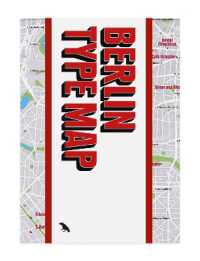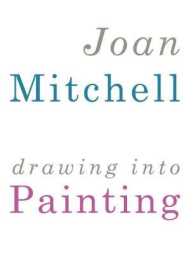- ホーム
- > 洋書
- > 英文書
- > Science / Mathematics
Full Description
Continued economic growth, human welfare, and national security depend upon constant technological progress; and the chief area for innovation in the coming years will be converging technologies, the synergistic combination of the "NBIC" fields: nanotechnology, biotechnology, information technology, and new technologies based in cognitive science. The significance of convergence was initially recognized in the first National Science Foundation conference on the societal implications of nanotechnology in 2000, which reported that the newly developed ability to measure, manipulate, and organize matter on the nanoscale was revolutionizing science and technology.
This volume will mark a major step forward, for three reasons: (1) Enough is understood about convergence now to permit serious consideration of governance issues and the likely human consequences. (2) Among the many convergence-related research projects, several in diverse areas have begun to deliver real results. (3) The network of NBIC researchers and analysts has developed to the point of being a real scientific and engineering community.
One cross-cutting theme will be the ethical, legal, and social consequences of technological convergence. Another is the hunt for areas of remarkable research opportunities and the transforming tools required to take maximum advantage of them.
Convergence will bring new approaches to what are currently diverse areas of research, such as converging technology platforms, physical and mental performance, human-machine interfaces, human cognition and communication, education and training, work efficiency, and many others. On their own, each of the NBIC technologies offers the potential for extraordinary advancement, but combined their potential is enormous and may provide revolutionary progress in human longevity, quality of life, learning, and productivity.
NOTE: Annals volumes are available for sale as individual books or as a journal. For information on institutional journal subscriptions, please visit www.blackwellpublishing.com/nyas.
ACADEMY MEMBERS: Please contact the New York Academy of Sciences directly to place your order (www.nyas.org). Members of the New York Academy of Science receive full-text access to the Annals online and discounts on print volumes. Please visit http://www.nyas.org/MemberCenter/Join.aspx for more information about becoming a member
Contents
Introduction: The Reality of Rapid Convergence. Part I: Perspectives on Convergence.
1. Progress in Governance of Converging Technologies (Mihail C. Roco).
2. Transformative Concepts in Scientific Convergence (William Sims Bainbridge).
3. Consillence and Convergence: The Ideas of E. O. Wilson (Ullica Segerstrale).
4. "Converging Technologies in Higher Education: A Paradigm for the "New" Liberal Arts?" (Robert T. Balmer).
Part II: Nano-Bio-Info Technology.
5. Biomimetic Nanotechnology (Osamu Takai).
6. Signal-Transducing Proteins for Nanoelectronics (Fabio Pichierri).
7. The Case for Nanogeoscience (Michael F. Hochella, Jr).
8. Nano-bio Convergence at the Molecular Level (Chih-Ming Ho and Jia Ming Chen 9. Three Levels of Neuroelectronic Interfacing: Silicon Chips with Icon Channels, Nerve Cells and Brain Tissue: Peter Fromherz).
Part III: Informatics for Convergence.
10. Designing Highly Flexible and Usable Cyberinfrastructures for Convergence (Bruce Herr, Weixia Huang, Shashikant Penumarthy, Katy Börner).
11. The Problem of Patent Thickets in Convergent Technologies (Gavin Clarkson and David DeKorte).
Part IV: Cognitive Enhancement.
12. Converging Cognitive Enhancements (Anders Sandberg and Nick Bostrom).
13. Affective Computing: Bio-Info-Cogno Convergence (Rana el Kaliouby and Rosalind Picard).
14. Building Personal Maps from GPS Data (Lin Liao, Donald J. Patterson, Dieter Fox, and Henry Kautz).
15. Embodiment Awareness, Mathematics Discourse, and the Blind (Frances Quek and David McNeill).
Part V: Social and Ethical Implications.
16. Nanotechnology and the Human Future: Policy, Ethics, and Risk (Nigel M. de S. Cameron).
17. Rethinking Enhancement in Sport (Andy Miah).
18. Justice, Fairness and Enhancement (Julian Savulescu).
19. Regulation: The Threat To Converging Technologies (Alan S. Ziegler).
Appendices.
APPENDEX I: Glossary of Convergence (The Editors).
APPENDIX II: Annotated Convergence Bibliography (William Sims Bainbridge).








